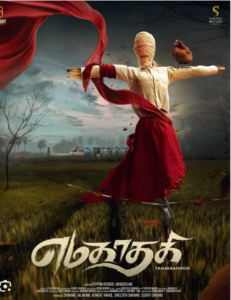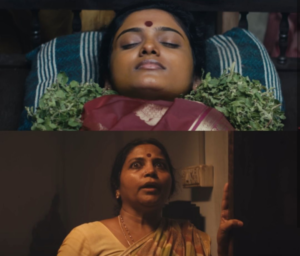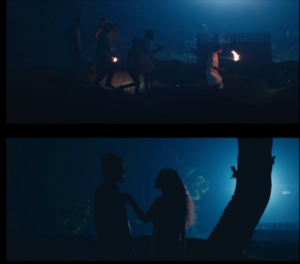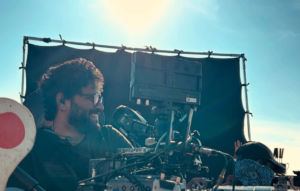
Yamakaathagi: Sujith Sarang DOP!
Mar 09 2025

Cinematographer Sujith Sarang on recently released Tamil feature Yamakaathaghi: Crafting a Visual Experience with Vintage Aesthetics
Q: Yamakaathaghi is finally releasing today. How do you feel about this journey?
It has been a journey of patience, perseverance, and trusting my instincts. This project taught me so much about life, friendship, and the value of time. Finding the idea, designing the project, and serving as both a creative producer and cinematographer was an exciting process. Many ask why I take on smaller films after working on bigger projects, but for me, it’s never about the size—it’s about the content. These films allow me to rediscover myself, stay rooted, and experiment with new ideas.

Q: You emphasize experimentation in cinematography. How did that influence your approach to Yamakaathaghi?
Experimentation is key in today’s cinematography. There are so many cameras, lenses, and lighting tools available, but I am always careful in choosing what truly enhances the director’s screenplay. I don’t stick to any particular camera or lens—I adapt according to the film’s needs and production constraints.
For Yamakaathaghi, since the story unfolds in a rural setting with strong mythological undercurrents, I wanted a 1990s aesthetic. I used Arri Kowa anamorphic lenses, which gave a natural softness, subtle color fringing at the edges, and internal reflections, adding to the organic, film-like feel. When I needed sharper images, I switched to spherical lenses.
Q: Why did you choose the Blackmagic Ursa Mini Pro for this project?
I had already worked with the Ursa Mini Pro and was familiar with its 15-stop dynamic range and color science. Its CinemaDNG RAW format gives a film stock-like texture, which suited the film’s mood. Since we were all deeply involved in the production, buying the camera made sense financially, allowing us full creative control. The built-in ND filters were a major plus.
Q: How did the camera perform in different lighting conditions?
The Ursa Mini Pro has great dynamic range, but its low-light performance isn’t the best. We had to stick to ISO 800 max and light the film as if we were working with traditional motion picture stock. This fit my contrast-heavy approach well. Since my colorist, Srijith Sarang, works with DaVinci Resolve, shooting on Blackmagic streamlined our workflow.


Q: What lighting techniques did you use?
We shot in a real village house, and I instructed the art department not to alter anything. I used traditional PAR and tungsten lights to maintain authenticity. The main character is often framed within four pillars, so I created a soft source by bouncing a PAR light off a Chimera cloth on the terrace. For street lighting, I relied on a 5kV tungsten, and inside the house, I used practical fotoflood bulbs to create natural patches of light.
Q: You often move between big and independent projects. How does that impact your creative approach?
I always step out of my comfort zone. Whether it’s a large-scale production or an independent film, I choose projects based on how much they challenge me. Every film offers a different visual language, and I adapt accordingly, never limiting myself to one style, camera, or lens.
Q: You’ve spoken about modern lenses being too ‘clean.’ Can you elaborate?
Today’s digital sensors are incredibly sharp, and modern lenses have eliminated most optical imperfections like aberrations and internal reflections. While this is great for technical precision, it can sometimes make images feel too clinical. Older lenses like the Kowa anamorphics have a certain organic quality—softness, slight color fringing, and internal reflections—that help create a more immersive and emotional cinematic experience.

Q: Any cinematographers you admire for their experimental approach?
Greg Fraser is one of my favorites. In a recent film, he used a Sony FX3 with Kowa lenses, and the image was strikingly different from the usual digital look. That kind of deviation and risk-taking excites me as a cinematographer.
Q: What do you hope audiences take away from Yamakaathaghi?
More than anything, I hope the visuals help immerse them in the world of the film. This movie is a dream come true for many theatre actors, budding performers, and technicians. The entire credit goes to my brother Sreejith Sarang, Venkat Rahul, and his father, Srinivas Rao Jalakam, whose trust and 15-year friendship mean the world to me. Their effort and pain in bringing this film to the screen are immeasurable. Huge thanks to them and director Peppin for the original idea, brilliant script, and direction.
I’m extremely happy with the positive response from press and celebrity screenings. I hope audiences connect with the story and experience the film in theaters, where the visuals and sound are best appreciated.
Article by
CJ Rajkumar
Author/ Cinematographer
